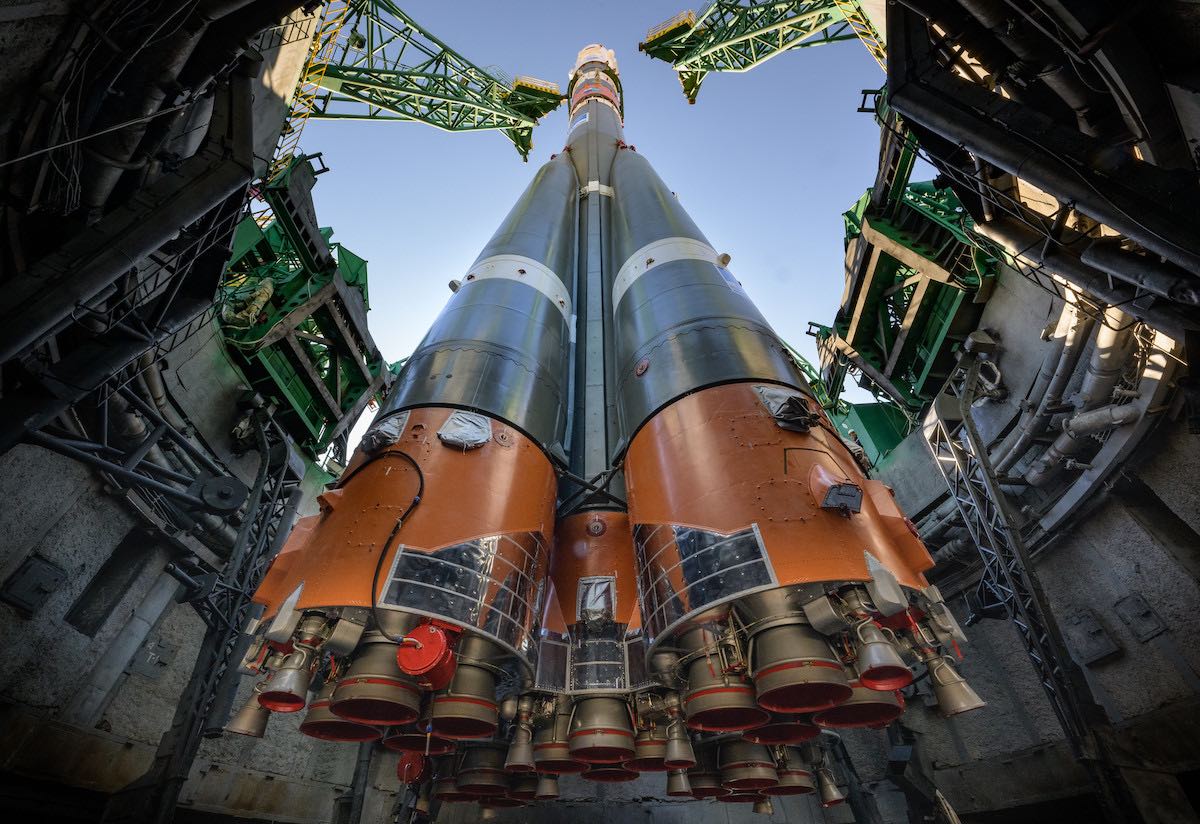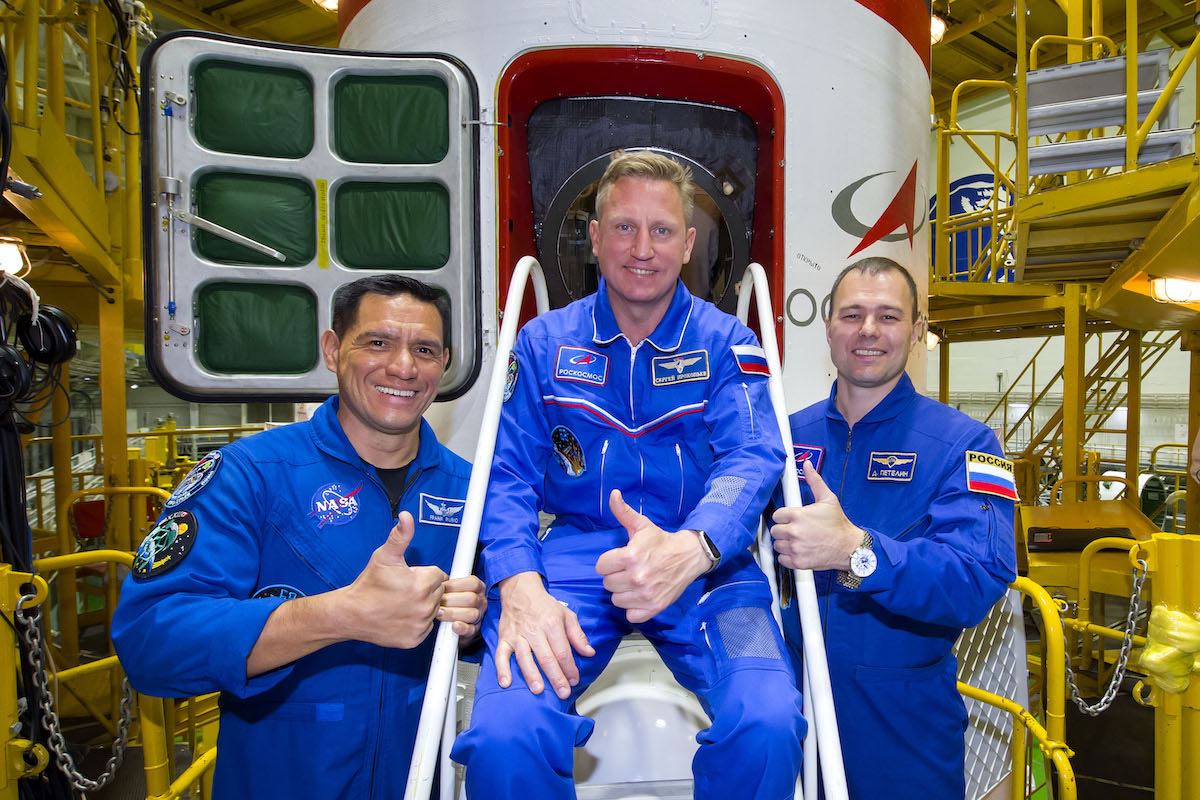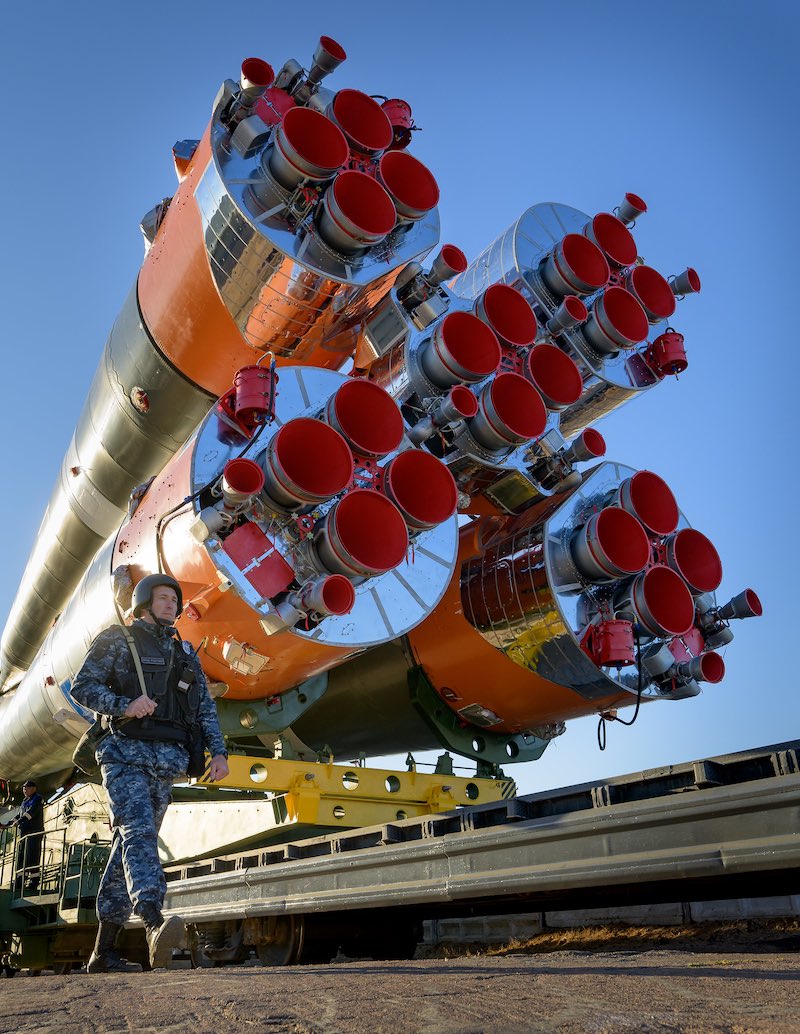
Ground teams at the Baikonur Cosmodrome in Kazakhstan rolled a Soyuz rocket to its launch pad Sunday, moving a step closer to liftoff Wednesday with a team of two Russian cosmonauts and a NASA astronaut heading for the International Space Station, the first flight of a U.S. crew member on a Russian spacecraft since Russia’s invasion of Ukraine.
NASA astronaut Francisco “Frank” Rubio will join Russian commander Sergey Prokopyev and flight engineer Dmitry Petelin for launch Wednesday at 9:54 a.m. EDT (1354 GMT) to begin a half-year on the space station. Rubio is preparing for his first flight to space after his selection to join the NASA astronaut corps in 2017.
Asked what he’s looking forward to most, Rubio said: “The launch itself. It’s got to be pretty amazing to get on a rocket and finally launch, and then quickly after that you become weightless, and then you’re going to be weightless for six months. I think that’s gonna be a pretty neat experience.”
Born in Los Angeles and raised in Miami by his Salvadoran mother, Rubio graduated from the U.S. Military Academy and piloted UH-60 Black Hawk helicopters on combat deployments to Bosnia, Afghanistan, and Iraq. He earned a medical degree in 2010 and served as an Army doctor before becoming a NASA astronaut.
Rubio, 46, is an Army lieutenant colonel with more than 650 free fall skydives to his credit. Now he’s heading for orbit for a half-year expedition on the space station. Rubio said he is eager to help advance scientific research on human biology to help prepare for future crew flights to the moon and Mars. Science experiments on the space station, now staffed by astronauts and cosmonauts for nearly 22 years, is geared toward gaining knowledge for future exploration beyond low Earth orbit.
“Things that were a huge concern initially, like bone density loss, we’ve kind of figured out how to get around that a little bit through exercise and resistive training,” Rubio said in a pre-launch interview. “So as we keep moving forward, I think we’re going to get better and better at the other tough hurdles, radiation being one of them, how changes in blood distribution affect your heart and your vascular system.
“Just knowing that every day we’re contributing to that knowledge base that will hopefully help humans achieve something that we could never dream of now, I think that’s just a really gratifying thing,” Rubio said.
Rubio is the first U.S. astronaut to launch on a Russian Soyuz spacecraft since April 2021. His flight on Russia’s Soyuz MS-22 crew capsule follows the signing of a bilateral “seat swap” agreement between NASA and Roscosmos, the Russian space agency, earlier this summer, allowing U.S. astronauts to fly to the station on Russian spaceships and Russian cosmonauts to launch and land on SpaceX’s Crew Dragon spacecraft.
NASA paid the Russian government for Soyuz seats, either through direct payments or through commercial intermediaries, before SpaceX’s Crew Dragon spacecraft entered service for astronaut missions in 2020. The new seat swap agreement does not include any exchange of funds between the governments, and is designed to guarantee U.S. and Russian crew members have continuous access to the space station, even if there are delays or groundings of SpaceX’s Crew Dragon or Russia’s Soyuz.
Two weeks after Rubio’s launch on the Soyuz MS-22 mission, Russian cosmonaut Anna Kikina will launch to the space station on a SpaceX Dragon spacecraft from NASA’s Kennedy Space Center in Florida with two NASA crewmates and a Japanese astronaut. NASA astronaut Loral O’Hara is Rubio’s backup for the Soyuz MS-22 mission, and is training to fly as a prime crew member on the Soyuz MS-23 spacecraft scheduled to launch next March.
While Rubio won’t get a chance to fly yet on one of the new U.S. crew capsules — SpaceX’s Crew Dragon or Boeing’s Starliner — he told reporters he feels confident in the reliability of the Soyuz.
“I think one of the things that you look for as an aviator and as an astronaut, or anybody who is going to be on any spacecraft or aircraft, is reliability, and the Soyuz is incredibly well proven,” Rubio said. “It’s got an incredible track record, and from that sense I feel very safe. It is proven technology in the sense that it’s been around for a long time. Because of that, it’s just all been pretty tried and true. If nothing else, I feel very confident that it’s a great spacecraft and it’s going to get us up there and back safely.”
Ground teams at the Baikonur Cosmodrome transferred the Soyuz MS-22 spacecraft and its Soyuz-2.1a rocket to the Site 31 launch complex Sunday. The rocket rode a specialized rail car to the pad from the Soyuz integration hanger, known by the Russian acronym MIK.
After arriving at the launch complex, the rocket was raised vertical over the pad’s flame trench. Ground teams raised retractable service towers into position around the rocket, providing access to the vehicle for final preflight checkouts, and for the three-person crew set to ride the Soyuz into orbit Wednesday.
Prokopyev will launch on his second flight to the space station. Petelin, like Rubio, is a first-time space flier.
Russian teams will load kerosene and liquid oxygen propellants into the three-stage Soyuz rocket in the final hours before launch. Liftoff with the Soyuz MS-19 spacecraft Tuesday is set for 9:54:49 a.m. EDT (1354:49 GMT; 6:54:49 p.m. Baikonur time), kicking off a fast-track pursuit of the International Space Station.

Powered by nearly a million pounds of thrust, the Soyuz booster will arc downrange northeast from Baikonur, shedding its four strap-on liquid-fueled boosters about two minutes into the mission. The rocket will jettison the aerodynamic fairing shielding the Soyuz MS-22 spacecraft, and the core stage will give way to a third stage to complete the job of placing the spaceship into orbit.
The spacecraft will separate from the third stage and begin maneuver to match the orbit of the space station, culminating in an automated docking to the outpost’s Rassvet module at 1:11 p.m. EDT (1711 GMT).
The arrival of Prokopyev, Petelin, and Rubio will temporarily raise the size of the station crew to 10 people. Oleg Artemyev, the outgoing space station commander, is scheduled to return to Earth on Sept. 29 aboard the Soyuz MS-21 spacecraft with crewmates Denis Matveev and Sergey Korsakov.
With Artemyev’s departure, European Space Agency astronaut Samantha Cristoforetti will take command of the space station’s Expedition 68 crew until her scheduled return to Earth on a SpaceX Crew Dragon spacecraft. Cristoforetti launched to the station in April with NASA astronauts Kjell Lindgren, Bob Hines, and Jessica Watkins on the Crew-4 mission. They will depart the station after the arrival of SpaceX’s Crew-5 mission next month.
See additional photos below of the Soyuz rocket’s rollout Sunday.







Email the author.
Follow Stephen Clark on Twitter: @StephenClark1.
from Spaceflight Now https://ift.tt/ORu1I4H
via World Space Info







0 comments:
Post a Comment